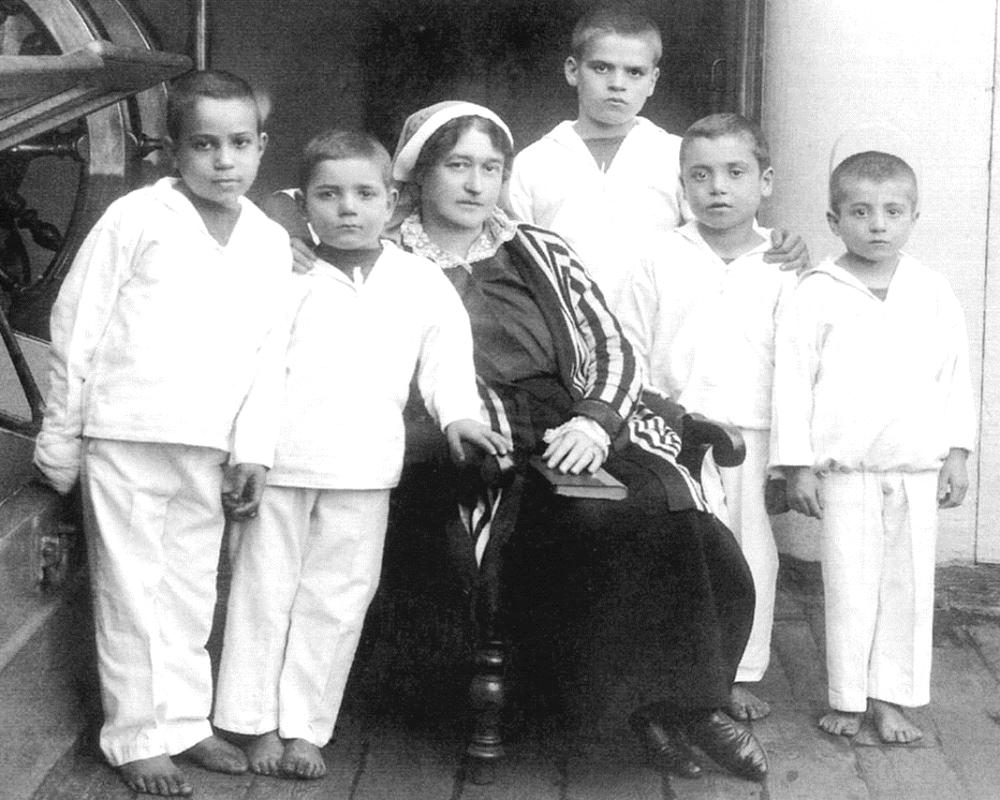
Educational Pioneers: Giulia Civita Franceschi (Italy, 1870-1957)

Figure 1.-- Giulia Civita Franceschi (1870-1957) was an Italian educator active in Naples. She directed the Nave Scuola Marinaretti Caracciolo for poor street boys (1913-23). This was a school like the Brititish naval training ships for young boys. Unlike the British naval training ships there was no close connection with the Navy, in this case the Italian Navy. Naples in southern Italy was a major port, but there were many derelict street children, many abandoned, in the city. Mussolini's Fascists upon seizing control, shut down the school. We see a photograph of Franceschi with five of the boys aboard the ship. Note the uniforms inspired by the British training ships: sailor uniform with bare feet.
|
|
Giulia Civita Franceschi (1870-1957) was an Italian educator active in Naples. She directed the Nave Scuola Marinaretti Caracciolo for poor street boys (1913-23). This was a school like the Brititish naval training ships for young boys. Unlike the British naval training ships there was no close connection with the Navy, in this case the Italian Navy. Naples in southern Italy was a major port, but there were many derelict street children, many abandoned, in the city. The main principles of her educational method were as she explained them were: 1) Instilling discipline as a personal responsibility. 2) Building a caring community for the boys. The school/ship became a family and a formative community.
3) Seeing play as a positive formative experienbce. Mussolini's Fascists upon seizing control, shut down the school (1923). Fascism lkike other totalitarian regimes sought to control the eduction and preparation of young people. Part of thiswas to control the schools and curriculum. They introduced a compulsory subject: "cultura fascista" Fascist culture, basically teaching Facist politiical ideolohgy. This primnarily mean control of the opiublic schools. Private schools were tolerated as liong as they accepted Fascist control including the ptomotion of Fascist ideology. Franceschi refused to accept this. Here we see a photograph of Franceschi with five of the boys aboard the ship. Note the uniforms inspired by the British training ships: sailor uniform with bare feet.
HBC-SU

Related Chronolgy Pages in the Boys' Historical Web Site
[Late 19th century]
[The 1930s]
[The 1940s]
[The 1930s]
[The 1940s]
[The 1950s]
[The 1960s]
[The 1970s]
[The 1980s]
Related Style Pages in the Boys' Historical Web Site
[Long pants suits]
[Knicker suits]
[Short pants suits]
[Socks]
[Eton suits]
[Jacket and trousers]
[Blazer]
[School sandals]
Navigate the HBC School Section
[Return to the Main educational pioneer page]
[About Us]
[Activities]
[Chronology]
[Clothing styles]
[Countries]
[Debate]
[Economics]
[Garment]
[Gender]
[Hair]
[History]
[Home trends]
[Literary characters]
[School types]
[Significance]
[Transport and travel
[Uniform regulations]
[Year level]
[Other topics]
[Images]
[Links]
[Registration]
[Tools]
[Return to the Historic Boys' School Home]
Created: 2:12 AM 4/16/2018
Last updated: 2:12 AM 4/16/2018




